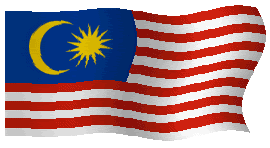
Wingtip Vortices and Wake Turbulence
Today we are going to talk about Wake Turbulence and Wing Tip Vortices. Wake turbulence is best explained as a spinning mass of air, originating from the wingtips of a large heavy airliner, trailing backwards that may cause following aircraft to enter an "unusual attitude" of which recovery is doubtful. This usually occurs during still or light air conditions but WestWind Captains should be aware of it at all times.
As the wings of a large airliner pass through the air, lift occurs when the high pressure under the wing tries to fill a vacuum of the low pressure on top of the wing. As a byproduct of this lift, some air will circulate causing a "rolling effect" to take place behind the wingtips. What happens is two vortices (the left wing clockwise and the right wing counterclockwise as viewed from behind the airliner looking forward) develop and continue to spin until their energies are reduced. Most of the energy is within a few feet of the center of each vortex but pilots should avoid a region within 100 feet of the vortex core. Airliners which are heavy and in the clean configuration give off the most intense vortices. Captains, flying an airliner, with a shorter wingspan and lighter weight, trailing a "heavy", should be alert of the possibility of wake turbulence.
Wing tip vortices start at the moment a "heavy" leaves the ground. Prior to takeoff or landing pilots should note the point of liftoff or touchdown of a "heavy"(you can see this using SB and MP). What is needed, in this situation, is to takeoff or land before wingtip vortices can become a threat to your airliner. To do this we must takeoff before the rotation of the "heavy" ahead of us and, (if landing) land at a point on the runway further down from where the "heavy" has touched down.
Wingtip vortices trail upward and outward from the wingtips of a "heavy" and spin in a counterclockwise motion. When they reach their highest point (depending on weight and speed of the "heavy") they start to sink towards the ground. Once they hit the ground they will roll laterally at about 2 or 3 knots. A crosswind may keep the upwind vortice in the runway area for an extended time. The worst condition is a light quartering tailwind. In this case the upwind vortice will move towards and up the runway making the judgment of where to touchdown difficult.
This video shows how wingtip vortices generate. It is simple and to the point:If you were following a "heavy" on an ILS approach, it is possible to experience wake turbulence as you proceed down the glideslope. In this case you would fly your approach descending "one dot" below the glideslope center position (fly above the glideslope). In a previous post I stated that the autopilot should be used down to minimums. Here is one case where you would "hand fly" the approach - keeping your glideslope path "one dot below" to avoid any wake turbulence.
It is possible to experience wake turbulence while you are on the ground waiting to take off. For example, if you were at the hold short line on the taxiway leading to the runway threshold and it was downwind of an approaching "heavy" then you could experience wake turbulence as the "heavy" lands. In this case the hold short lines of the taxiway are 280 feet from the centerline of the runway (for designated runways for "heavies").
Another case, that could "ruin your day", is doing a "missed approach" following a "heavy" that also "missed". In this case it would be wise to fly your missed approach at your best angle of climb airspeed to get to your initial missed approach altitude.
The controllers responsibility (for VFR Flight) is to allow for a two minute "hold time" before clearance to takeoff behind a "heavy". In cases where the Captain accepts a "visual" approach, it is the Captain's responsibility to stay clear of any wake turbulence condition. In all cases the Captain is the final authority for safe flight.
.









































0 comments:
Post a Comment